BE553 Principles of International Marketing Sample
Introduction
Covid-19 seems to be having a high impact on the market conditions across the globe. Companies operating in international scenarios seem to be highly impacted by the prevalence of covid scenarios. As Multinational Enterprises (MNEs) are having global presence, their decline of sales alongside revenue at the same time within several regions of operations seems to be creating high challenges for organisations to sustain their operations within global scenario.
The current report in this respect will be highlighting challenges alongside impact of covid-19 on the business domain of Apple, a technological company operating successfully within various nations. In addition to this, trends alongside new normal of the company after the pandemic will also be highlighted in the study below. Lastly, the study will also be stating internal alongside external factors that are responsible for driving change within the marketing alongside international strategies of the company further influencing its operations worldwide.
Company overview
Apple is a multinational company dealing largely with technological instances within the domain of America. Founded in 1976, the company has been operating worldwide for 45 years (Apple, 2021). Besides, Apple was founded at Los Altos, US and is currently headquartered in Cupertino, US. The company specialises in the aspects of computer software products along with consumer electronics, online services, and others.
Mission of the company depicts best experience for the customers with the value of innovation (Apple, 2021). On the other hand, vision of the company is to become the face of the Earth in terms of making great quality products and services, further creating a positive impact of technology on the lives of people (Apple, 2021). Based on this notion and target, Apple is being recognised as the fourth largest vendor of Personal Computers by the aspects of sales in the worldwide scenario as of 2021.
In addition to this, as of 2021, the company is also being recognised as the largest company based on information technology through its revenue that depicts $365.817 billion (Apple, 2021). However, international product portfolio of the company depicts Macintosh, iPod, iPhone, iPad and many others. Moreover, the company also deals with certain international services that further help the company to sustain its business within global scenario.
In this respect, international service of the company depicts App Store, Apple Music, Apple Pay, iCloud, iTunes Stores and many others (Apple, 2021). Through its business operations and internationally offered products and services, the company was successful in becoming the most valued company within the domain of the US as of 2018, just before pandemic. However, prevalence of pandemic also seems to be affecting business operations of Apple in the current scenario.
Discussion
Impact and challenges of covid-19 on the industry and the company
Evaluation of challenges and impact of covid-19 on the industry
Challenges seem to be highly common within any business environment further affecting its operations and notion of sustainability within the targeted markets. According to Hartmann & Lussier (2020), prevalence of covid-19 in the current scenario seems to be impacting business environments and has been creating several challenges in its operations.
Due to covid-19, there has been high job loss that further affected economy of a nation. As a result of this, people within a nation are facing poor economic conditions that further created several barriers in the buying of costly goods and services (Alashhab et al., 2021). As technological instances are costly, therefore, it has been creating challenges in maintaining sales and revenue margin of the technological industry.
One of the common challenges that have been imposed by covid depicts the increasing rate of work from home. In addition to this, due to closure of shops there has been increasing rate of job cuts further depicting another most challenges faced by businesses.
However, as argued by Pantano et al. (2020), employees within technological sector are forced to work from home due to covid, thereby reflecting high chances of security risks faced by them. As a result, it seems of a challenge faced by technological sector amidst covid pandemic.
Other than that, technological sector is also facing issues in terms of crisis management alongside response. It is because, as per Jiang et al. (2021), due to covid, events that were planned are being cancelled in order to prevent the occurrence of covid-19 disease. As a result, there is a high uncertainty within this sector regarding operational instances.
Besides, Kulachinskaya et al. (2020) stated that raft in terms of event cancellation is also depicting fewer opportunities for the business to develop in future. Additionally, issues in terms of managing workforce due to the prolong impact of covid pandemic are also faced by technological sector.
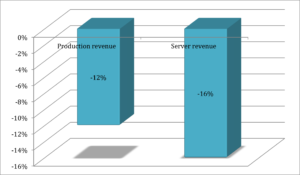
Figure 1: Decline of server revenue and production revenue in technological sector
(Source: Influenced by PWC, 2021)
It is because, as depicted by Sheth (2020), due to covid, the companies are not able to recruit appropriate workers that are further impacting the skilled workforce. In this respect, challenges are faced in maintaining skilled workforce that further impacts on performance level within organisational domain further failing to meet satisfaction level of customers.
Henceforth, these challenges faced by technological sector due to covid are directly impacting on the supply chain and operations of the company. Nonetheless, considering supply chain and operational instances of technological sector, challenges of cash flow management alongside production can be depicted due to covid. It is because, as of 2020, the production of smart phones alongside server revenue has been observed to decline by 12% and 16% respectively (PWC, 2021).
Apart from that, IT spending worldwide also seems to be dropping to 1.2% by the end of 2020 from 5.2% in January 2020 (Hendersom, 2021). Hence, it can be stated that the technology and information sector faced several challenges due to covid that further impacted the operation, supply and production of the industry.
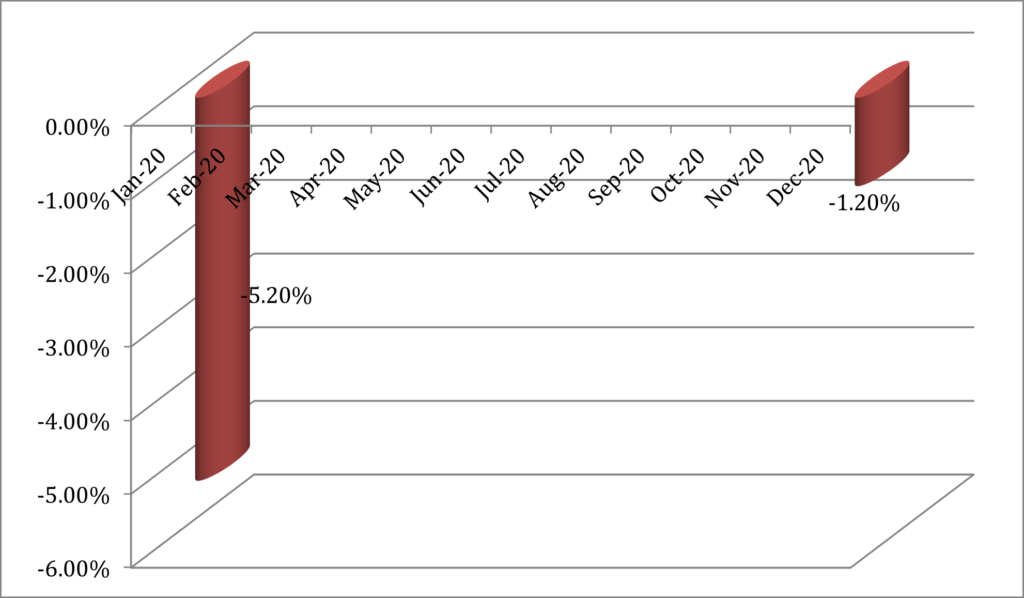
Figure 2: IT spending worldwide
(Source: Influenced by Hendersom, 2021)
Evaluation of covid 19 impact and challenges on the business operations of Apple
Based on the above instances, Apple also seems to be facing several challenges due to the prevalence of covid scenario. In this respect, it can be seen that closure of all Apple shops is considered to be one of the biggest challenges by the company during the covid tenure (Clover, 2021). Challenges have been faced in terms of closure of all retail shops, corporate offices, service centres and others and employees have been provided with the notion of working from home (Clover, 2021).
Due to closure of retail shops alongside restrictions on long working hours, Apple also seems to face issues in its production management. In this respect, as depicted by Liu et al. (2020), improper production management within an organisation results in low sales further creating a high gap for the company to accomplish targeted goals.
In addition to this, Apple has also faced challenges in managing its workforce, as skills of the workforce seem to be highly impacted due to lockdown and no scope of skills development through training and development. In addition to the following covid guidelines, Apple seems to be implementing travel restrictions for the employees that further created a high challenge for the company to manage its overseas operations.
It is because, as illustrated by Brammer et al. (2020), improper monitoring and control can lead to improper operations further failing to meet organisational values and maintain proper position within the market. Henceforth, it can be observed that Apple has faced challenges of proper management of the workforce alongside proper production, relationship with other companies and others due to the prevalence of covid-19 scenarios.
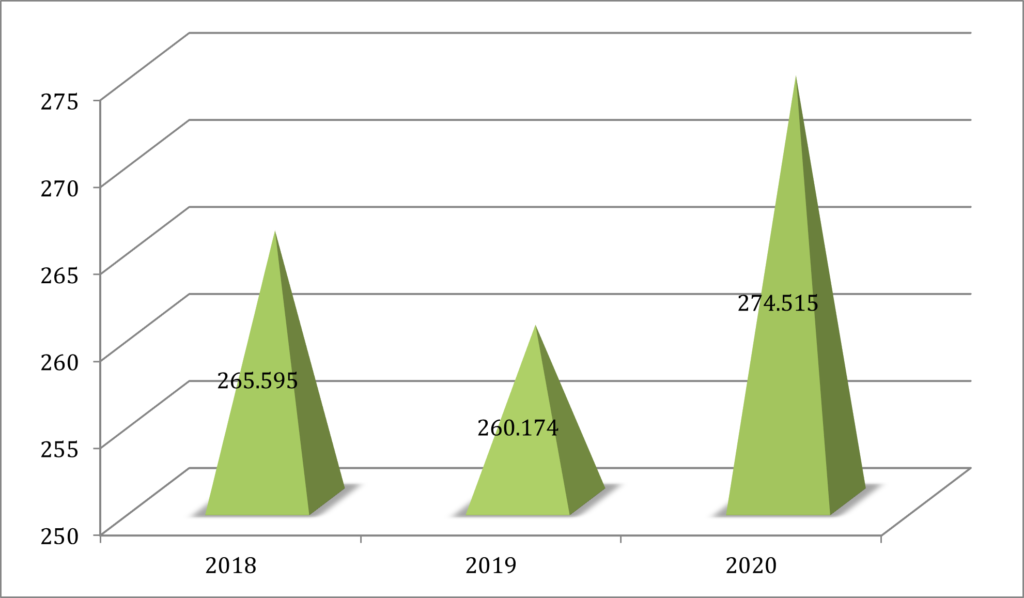
Figure 3: Revenue of Apple (in $ billions)
(Source: Macrotrends, 2021)
Based on the challenges faced by Apple within its business domain, the revenue of the company was highly impacted. It is because, as of 2018, revenue of Apple depicted a value of $265.595 billion (Macrotrends, 2021). However, as of 2019, due to covid, the revenue of the company declined by 2.04% further depicting a value of $260.174 billion (Macrotrends, 2021).
Nonetheless, 2020 recorded the lowest amount of growth within the revenue margin of Apple by 5.51% further depicting a value of $274.515 billion (Macrotrends, 2021). Apart from this, sales of Apple also seem to have decreased due to the stated instances. For instance, one of the popular products of Apple, iPhone, seems to be having a decline in sales volume by 7% as of 2020 (Fieldhack, 2021).
iPhone of Apple is considered to be one of the highly demanded product in every region of its operations. However, decline of iPhone sales volume seems to be affecting its sales margin adversely. Similarly, revenue of Mac alongside iPad also fell by 3% and 10% respectively (Fieldhack, 2021) [Refer to Appendix 1]. Henceforth, covid-19 seems to be creating high challenges and impact for Apple to operate smoothly within its targeted market.
Trends after pandemic
From the section above it can be analysed that the prevalence of covid tends to be impacting the operational instances of Apple adversely that in turn impacted revenue and sales of the company adversely. Based on the challenges faced by the company alongside the situation of the world due to covid, Apple took certain initiatives to mitigate the issues worldwide.
In this respect, Apple announced different plans that deal with donating money to the people those are fighting for mitigation of covid disease and have doubled the amount afterwards (Clover, 2021). Based on this notion, Apple is also providing unlimited leave for sickness to all the employees so that they can take good care of health and stop spreading of the disease. Despite the negative trends seen within Apply in terms of low revenue of iPhone, Mac and other products of Apple, there have also been certain positive trends within the company due to this pandemic.
For instance, it can be observed that the sale of home wearable, accessories and others increased 23% as of 2020 further depicting a value of $6.3 billion (Fieldhack, 2021). Additionally, service revenue of the company also grew in the same year by 17% further reflecting a value of $13.3 billion (Fieldhack, 2021) [Refer to Appendix 2]. However based on the reports of the company it can also be observed that prices of iPhone of Apple do not depict any increase from the previous year due to the prevalence of covid.
It is because, as per Shen et al. (2020), covid-19 disease seems to be creating high impact on the economic condition of a nation through lockdowns, job cuts, and others. As the company slashed the prices of iPhone 12 and further announced no rise in the price margin of iPhone series, therefore, there has been a trend of high demand of the products and services of Apple within the market.
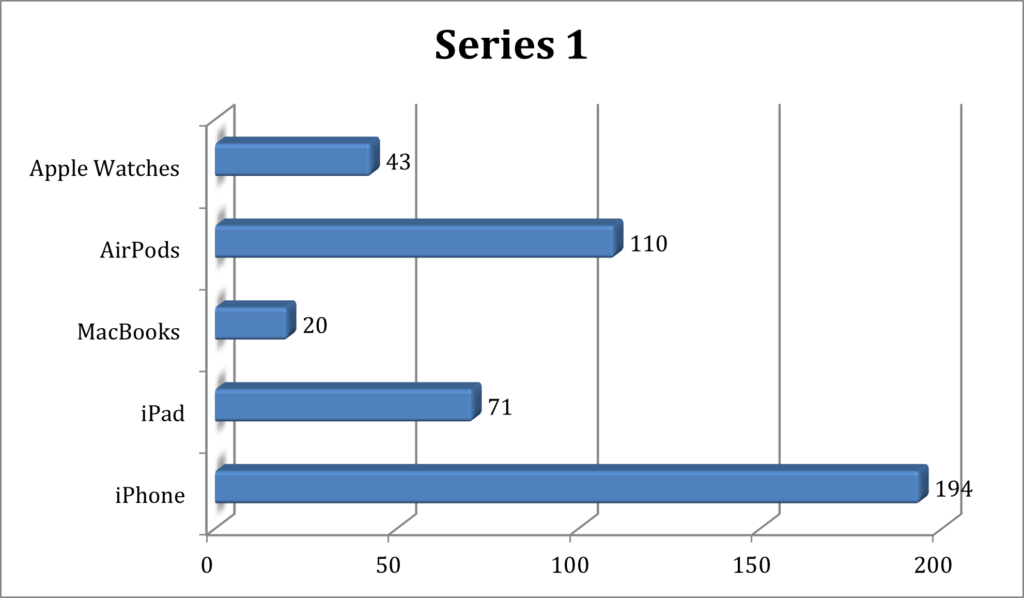
Figure 4: Sales of Apple product after pandemic (in millions)
(Source: Influenced by Curry, 2021)
It is because, as per the theory of demand and supply. It can be observed that low prices of the products tend to create high demand alongside supply within the market (Ekambi, 2019) [Refer to Appendix 3]. As a result, there has been a high rise in the sales of products of Apple as of 2021 further depicting 194 millions of sales of iPhone, 71 million sales of iPad, alongside 20 million sales of MacBooks and Mac product (Curry, 2021).
In this respect, among the total revenue that has been gained by Apple as of 2021, reflecting a value of $365 billion, 52% have been generated by the product of iPhone (Curry, 2021). In addition to this, AirPods and Apple Watches reflect a sale of 110 million and 43 million respectively (Curry, 2021). Henceforth, new trends of Apple reflects high sales of the products and services due to low prices further it also reflects high sales of home accessories of the company.
Internal and external factors driving change within internationalisation and marketing strategy of Apple
External alongside internal factors seems to be highly responsible for driving change within any business organisations. As of Apple, donation of the company in areas affected by covid disease seems to be influencing the strategy of marketing alongside internationalisation. It is because, as illustrated by Gries (2020), helping areas affected by covid with money or free products and services tends to create high awareness of the company within that area.
As a result of this, the strategy of marketing alongside internationalisation also helps the company to create international presence through its activity. Organisational culture of Apple also seems to be an internal factor affecting the internationalisation and marketing strategy of the company. It is because, as per Almeida et al. (2020), marketing instances are highly based on values depicted by an organisation. In this respect, Apple seems to be highly dependent on organisational instances of innovation and creativity.
This in turn helps in designing proper marketing strategy that will depict the notion of the company. Besides, political alongside technological factors of Apple serves as crucial external factors influencing organisational marketing and internationalisation strategy. As opined by Akpan et al. (2020), political factors of different countries are different that further impacts on revenue generation and operational laws.
As Apple is a company based on high technological instances, therefore, improper technological advancements within a market seems to be impacting the strategy of internationalisation alongside the market of the company. Proper advancement of technology alongside positive reflection of political environment within a nation seems to be creating a positive impact on Apple’s operations. Henceforth, the stated operations seem to be impacting Apple in its marketing and internationalisation strategies.
Conclusion and recommendations
From the study above it can be concluded that the prevalence of covid seems to be impacting operational instances of Apple adversely. Apple is a famous operating company headquartered in the US and produces innovative solutions of technology such as Apple Watch, iPhones, computers and others to its customers.
Covid-19 seems to be affecting the overall technological industry in terms of creating high challenges of maintaining proper workforce, skills of the employees, lowering the production level and decreasing the spending of IT products and others. Based on this notion, Apple is also impacted by the low sales and revenue margin within its operations. Due to the closure of the retail shops, Apple faced challenges in maintaining its operations and creating proper production levels. In this respect, the sales of iPhone, Mac and iPad reflected a decline of 7%, 3% and 10% respectively. This also led to lower revenue and sales margin within the domain.
However, trends after the pandemic reflected slashed prices of iPhones alongside no rise in prices. This resulted in a high sales boost of iPhones and other home accessories products of the company after the pandemic. Additionally, internal and external factors such as donation to covid-affected areas, proper relationship building, and other factors tend to affect the internationalisation alongside marketing strategy of Apple within the domain.
However, considering the current scenario it can be recommended that Apple can lower the prices of its product and services so that it can result in high demand and sales within the market. Moreover, low price will also be effective in attracting all types of customers further creating the accessibility of the company within the market. Furthermore, training and development aspects can also be included within organisational domain to develop the skills of the employers and create high value of products and services.
Reference list
Akpan, I. J. Udoh, E. A. P. & Adebisi, B. (2020) Small business awareness and adoption of state-of-the-art technologies in emerging and developing markets, and lessons from the COVID-19 pandemic. Journal of Small Business & Entrepreneurship, 1-18.
Alashhab, Z. R. Anbar, M. Singh, M. M. Leau, Y. B. Al-Sai, Z. A. & Alhayja’a, S. A. (2021) Impact of coronavirus pandemic crisis on technologies and cloud computing applications. Journal of Electronic Science and Technology, 19(1), 100059.
Almeida, F. Santos, J. D. & Monteiro, J. A. (2020) The challenges and opportunities in the digitalization of companies in a post-COVID-19 World. IEEE Engineering Management Review, 48(3), 97-103.
Apple (2021), Apple at Work, Apple, Online at: https://www.apple.com/uk/business/ Accessed 2 December 2021
Apple (2021), Last-minute gifts for every last one, Apple, Online at: https://www.apple.com/uk/ Accessed 2 December 2021
Brammer, S. Branicki, L. & Linnenluecke, M. K. (2020) COVID-19, societalization, and the future of business in society. Academy of Management Perspectives, 34(4), 493-507.
Clover, J. (2021) COVID-19 Coronavirus: Impact on Apple’s iPhone, Mac and WWDC, MacRumours, Online at: https://www.macrumors.com/guide/covid-19-coronavirus/ Accessed 2 December 2021
Curry, D. (2021), Apple Statistics (2021), BusinessofApps, Online at: https://www.businessofapps.com/data/apple-statistics/ Accessed 2 December 2021
Ekambi, J. (2019) Bitcoins the Future of the theory of Demand and Supply: Any hidden agenda?. GPH-International Journal of Business Management (IJBM), 2(04), 22-39.
Fieldhack, J. (2021) Apple iPhone Sales Suffer Due to COVID-19; Services and Wearables Come to the Rescue, Counterpoint, Online at: https://www.counterpointresearch.com/apple-iphone-sales-suffer-due-covid-19-services-wearables-come-rescue/ Accessed 2 December 2021
Gries, T. (2020) A New Theory of Demand-Restricted Growth: The Basic Idea. The American Economist, 65(1), 11-27.
Hartmann, N.N. & Lussier, B., (2020) Managing the sales force through the unexpected exogenous COVID-19 crisis. Industrial Marketing Management, 88, pp.101-111.
Hendersom, J. (2021) Hardware, software and services: How Covid-19 is impacting Asian tech spend, Channel Asia, Online at: https://www.channelasia.tech/article/672259/hardware-software-services-how-covid-19-impacting-asian-tech-spend/ Accessed 2 December 2021
Jiang, P. Van Fan, Y. & Klemeš, J. J. (2021) Impacts of COVID-19 on energy demand and consumption: Challenges, lessons and emerging opportunities. Applied energy, 285, 116441.
Kulachinskaya, A. Akhmetova, I. G. Kulkova, V. Y. & Ilyashenko, S. B. (2020) The Challenge of the Energy Sector of Russia during the 2020 COVID-19 Pandemic through the Example of the Republic of Tatarstan: Discussion on the Change of Open Innovation in the Energy Sector. Journal of Open Innovation: Technology, Market, and Complexity, 6(3), 60.
Liu, Y. Lee, J. M. & Lee, C. (2020) The challenges and opportunities of a global health crisis: the management and business implications of COVID-19 from an Asian perspective. Asian Business & Management, 1.
Macrotrends (2021) Apple Revenue 2006-2021 | AAPL, Macrotrends, Online at: https://www.google.com/url?q=https://www.macrotrends.net/stocks/charts/AAPL/apple/revenue&sa=D&source=docs&ust=1639217432738000&usg=AOvVaw3ODQNTFldeMq2v9Yk28B1Y Accessed 2 December 2021
Pantano, E., Pizzi, G., Scarpi, D. & Dennis, C., (2020) Competing during a pandemic? Retailers’ ups and downs during the COVID-19 outbreak. Journal of Business Research, 116, pp.209-213.
PWC (2021) COVID-19 and the technology industry, PWC, Online at: https://www.pwc.com/us/en/library/covid-19/coronavirus-technology-impact.html Accessed 2 December 2021
Shen, W. Yang, C. & Gao, L. (2020) Address business crisis caused by COVID-19 with collaborative intelligent manufacturing technologies. IET Collaborative Intelligent Manufacturing, 2(2), 96-99.
Sheth, J., (2020) Business of business is more than business: Managing during the Covid crisis. Industrial Marketing Management, 88, 261-264.
Appendices
Appendix 1: Decline of volume of Apple products
(Source: Influenced by Fieldhack, 2021)
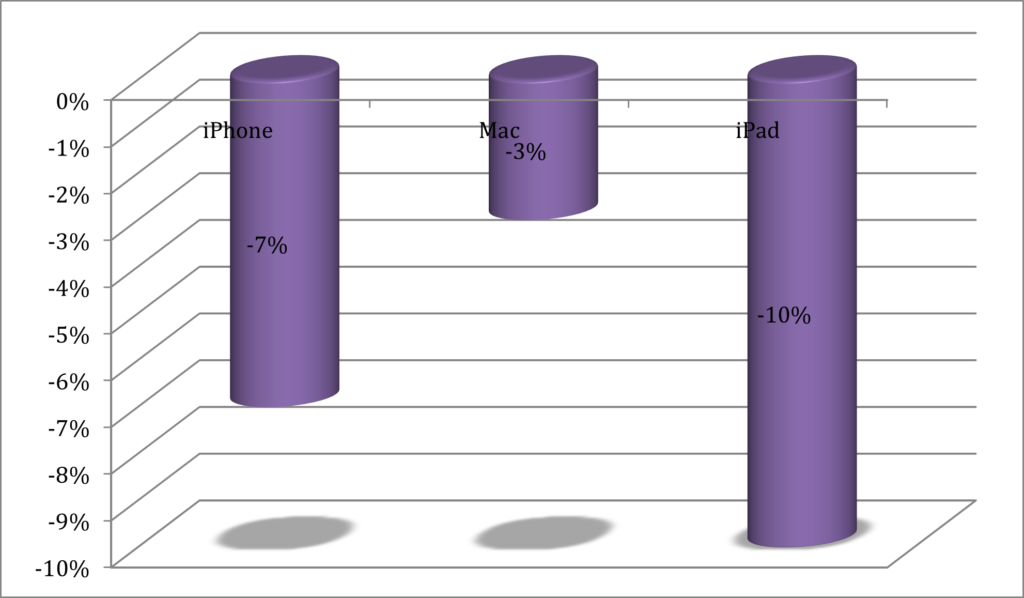
Appendix 2: Sales growth of Apple products
(Source: Influenced by Fieldhack, 2021)
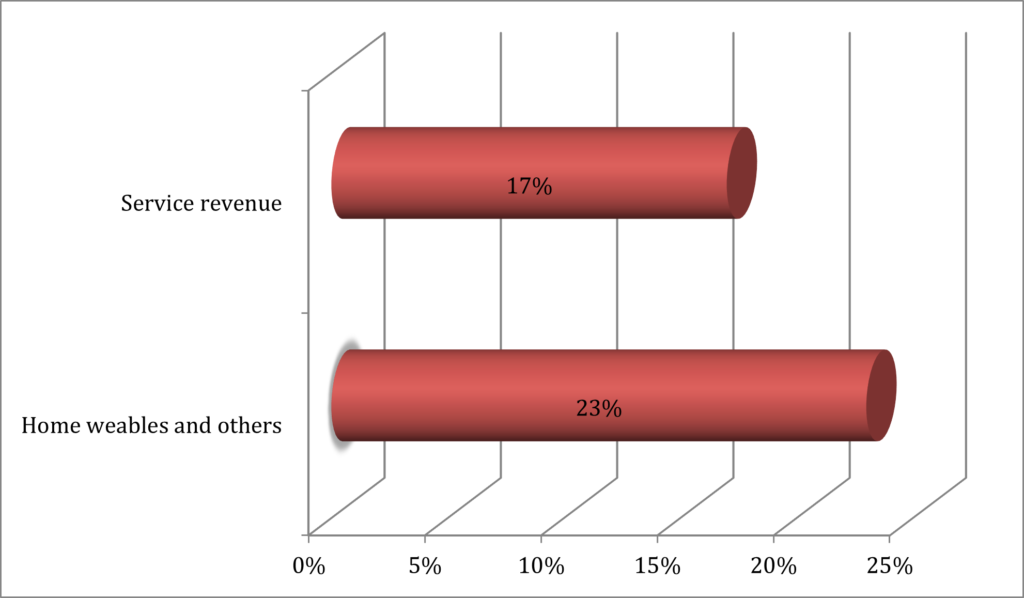
Appendix 3: Theory of demand and supply
(Source: Gries, 2020)

Know more about UniqueSubmission’s other writing services:

